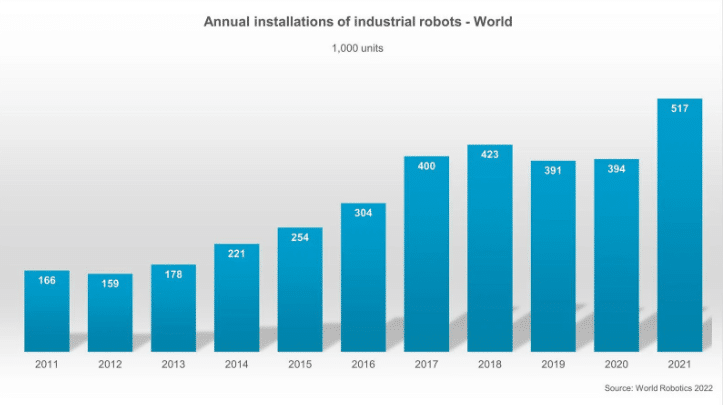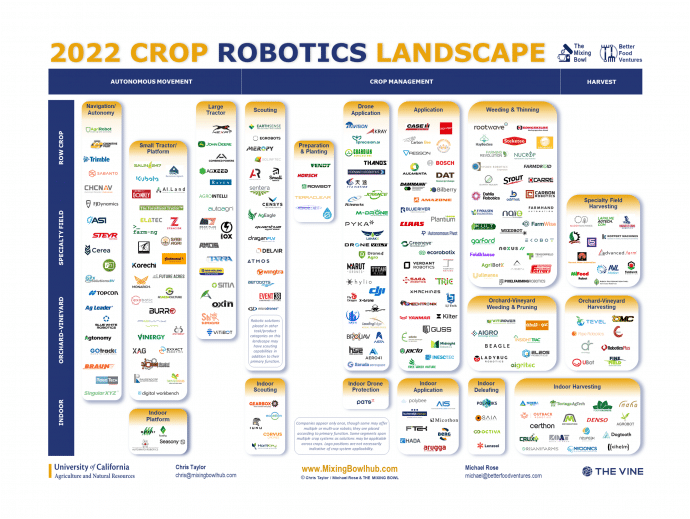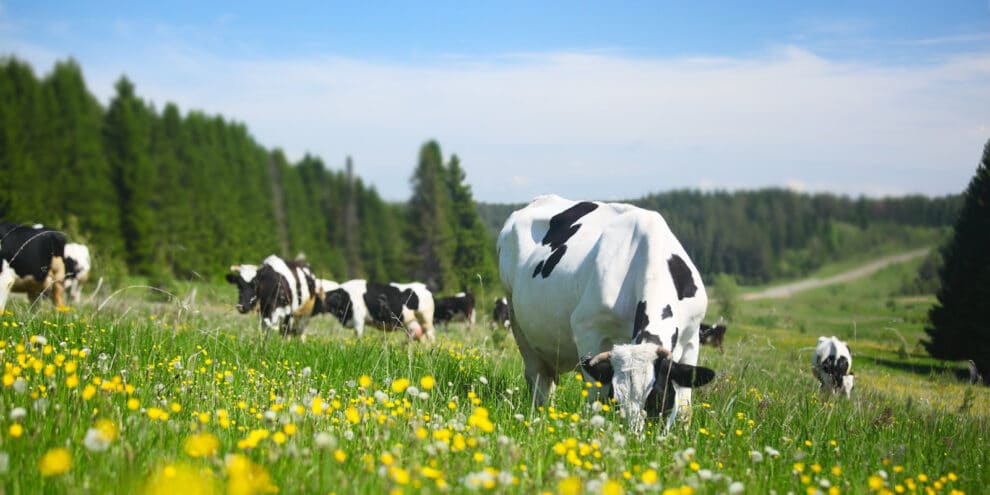Labor market tightness and wage inflation are are hitting companies across all sectors, making it difficult to maintain profitability and agriculture is no exception. Automation is changing agriculture at a startling pace, but agriculture remains a labor-intensive business, with key tasks including planting, weeding, thinning, harvesting, and product transportation across the supply chain. Over the past few decades, the number of people working on farms has decreased by 70% across both family and hired farm workers, exacerbating the problem.
The agriculture industry’s technological revolution is in full swing. The next step to tackle labor shortages in farming is robotics. The International Federation of Robotics reports an all-time high of 517,385 new industrial robots installed in 2021 around the world. Installations of robots have grown 31% year-on-year. Around the world today, there are a record 3.5 million robots in the industry.

A host of agri-tech start-ups and established players have made robotic advancements that are transforming farming, from growing and harvesting crops to taking care of cattle. Agriculture industry thought leader Mixing Bowl Hub defines crop robots as “machines that use hardware and software to perceive surroundings, analyze data and take real-time action on information related to an agricultural crop-related function without human intervention.” The Mixing Bowl, along with Better Food Ventures, the University of California’s college of Agriculture and Natural Resources, and The Vine have collaborated to create a graphic of the crop robotics landscape that provides a nice summation of the work being done in this rapidly evolving field.

Automatic milking systems (AMS) or milking robots are one of the most successful and important application of robotics in the dairy industry. Robotic technologies are also improving animal health standards. Downstream in the supply chain, the food and beverage industry also face severe labor shortages exacerbated by the COVID-19 pandemic. In this space, robots also help enhance hygiene and food safety and their use has grown 18% globally year-over-year.
Ag Robotics as an Investment Play
Robotics require substantial initial capital outlay and producers will face challenges implementing the new robotic solutions. Farming-as-a-Service (FaaS), a professional service framework offering a suite of agricultural management solutions, and leasing models will help ag robotics systems gain initial acceptance as a valuable tool for farmers around the world until direct sales can pick up. Private investment capital can also help, both to spur new technology development in early-stage AgTech companies and to assist early adopting farmers with equipment acquisition.
This content may not be used or reproduced in any manner whatsoever, in part or in whole, without written permission of LANDTHINK. Use of this content without permission is a violation of federal copyright law. The articles, posts, comments, opinions and information provided by LANDTHINK are for informational and research purposes only and DOES NOT substitute or coincide with the advice of an attorney, accountant, real estate broker or any other licensed real estate professional. LANDTHINK strongly advises visitors and readers to seek their own professional guidance and advice related to buying, investing in or selling real estate.










Add Comment